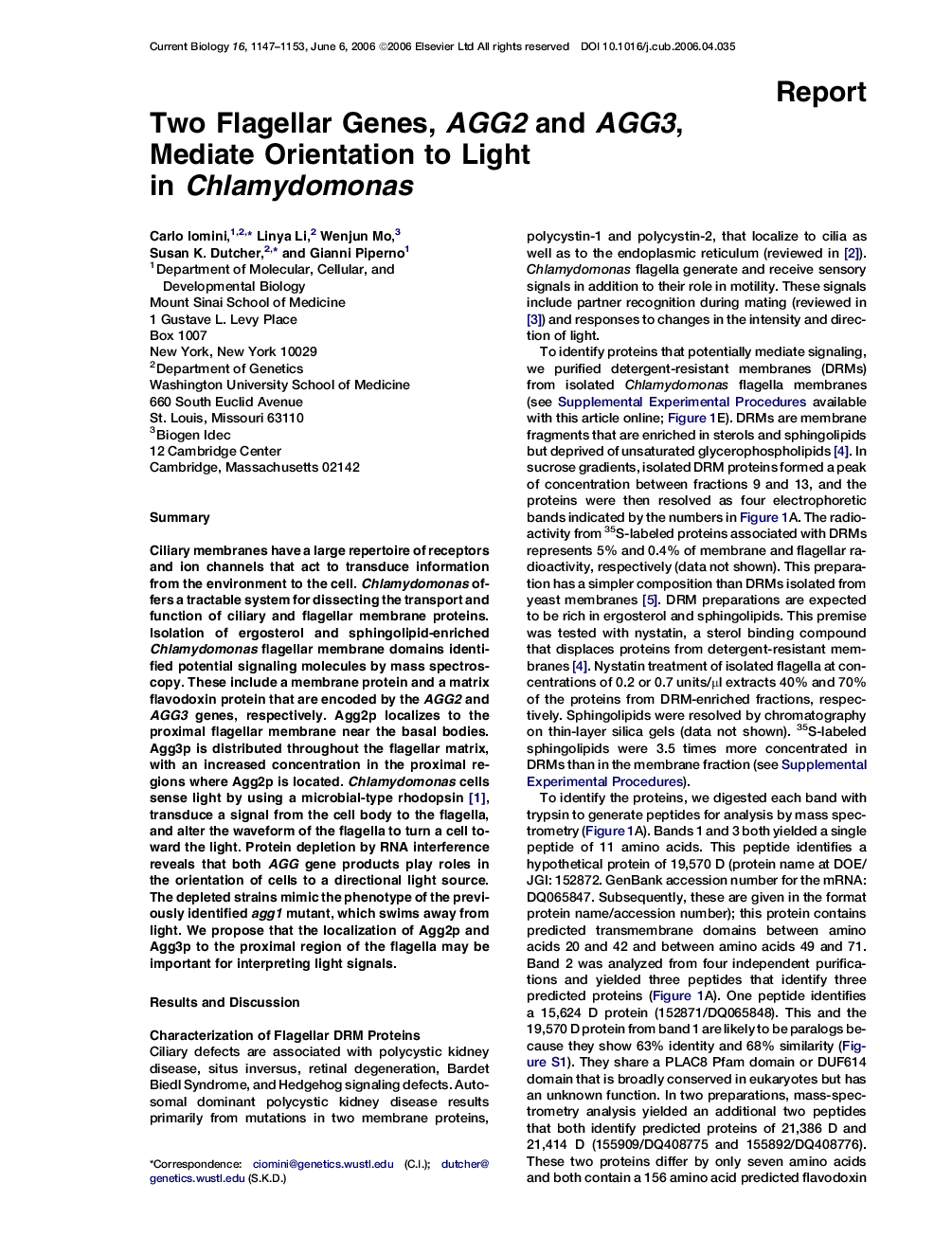| Article ID | Journal | Published Year | Pages | File Type |
|---|---|---|---|---|
| 2045620 | Current Biology | 2006 | 7 Pages |
SummaryCiliary membranes have a large repertoire of receptors and ion channels that act to transduce information from the environment to the cell. Chlamydomonas offers a tractable system for dissecting the transport and function of ciliary and flagellar membrane proteins. Isolation of ergosterol and sphingolipid-enriched Chlamydomonas flagellar membrane domains identified potential signaling molecules by mass spectroscopy. These include a membrane protein and a matrix flavodoxin protein that are encoded by the AGG2 and AGG3 genes, respectively. Agg2p localizes to the proximal flagellar membrane near the basal bodies. Agg3p is distributed throughout the flagellar matrix, with an increased concentration in the proximal regions where Agg2p is located. Chlamydomonas cells sense light by using a microbial-type rhodopsin [1], transduce a signal from the cell body to the flagella, and alter the waveform of the flagella to turn a cell toward the light. Protein depletion by RNA interference reveals that both AGG gene products play roles in the orientation of cells to a directional light source. The depleted strains mimic the phenotype of the previously identified agg1 mutant, which swims away from light. We propose that the localization of Agg2p and Agg3p to the proximal region of the flagella may be important for interpreting light signals.
